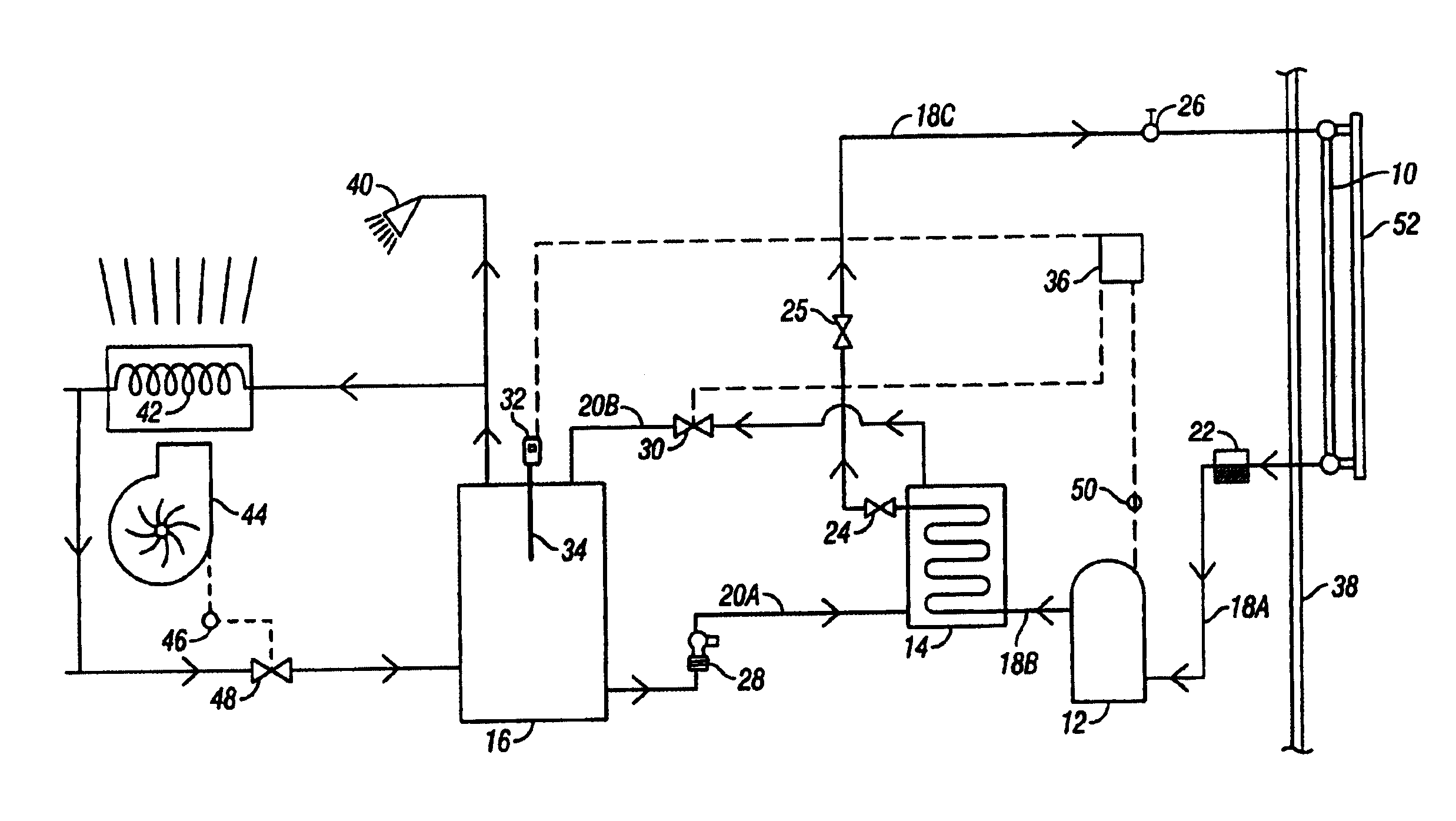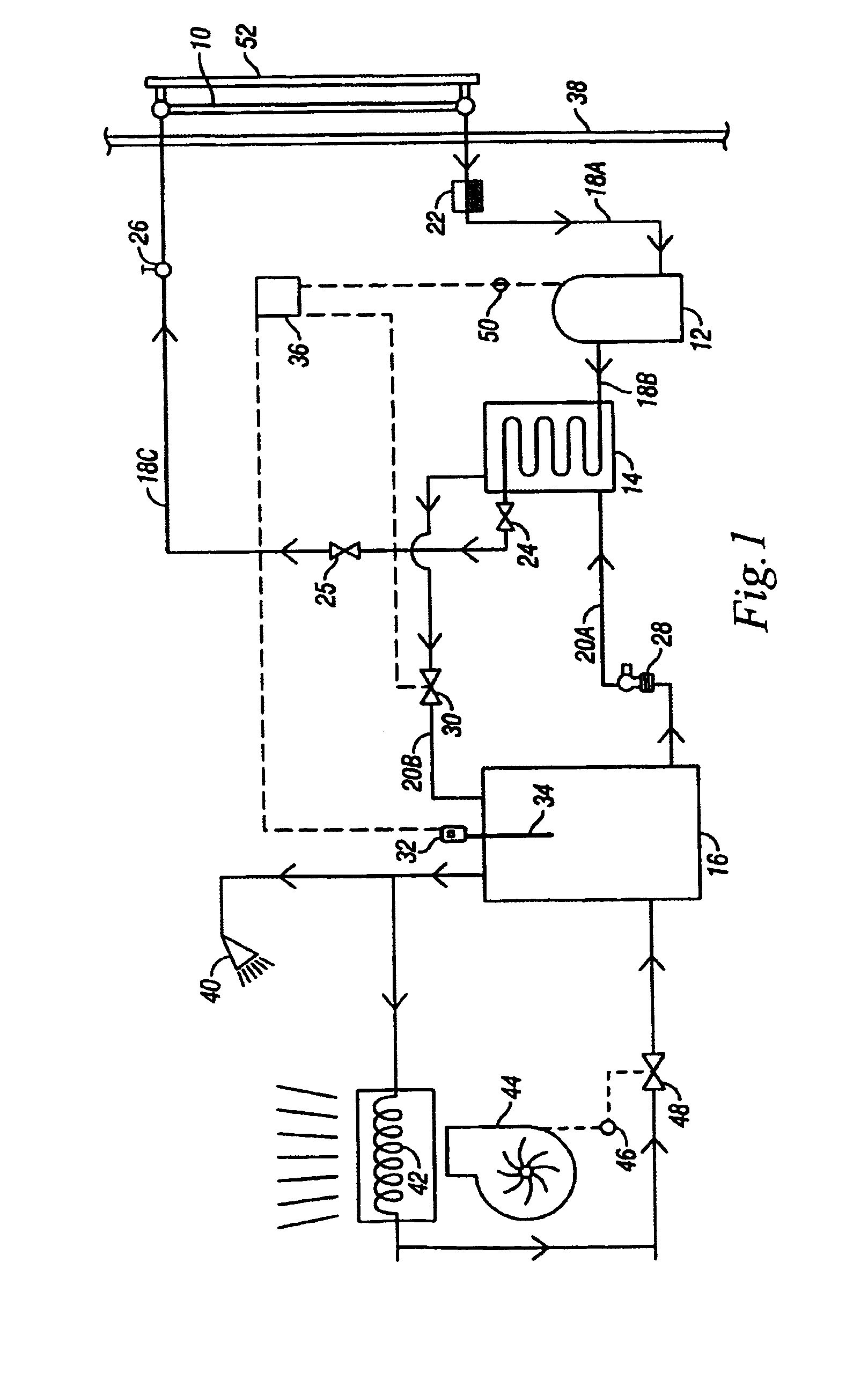Ambient thermal energy recovery system
a thermal energy recovery and ambient technology, applied in the direction of heat pumps, lighting and heating apparatus, heating types, etc., can solve the problems of inability to meet the needs of users, and failure of refrigerant systems, etc., to achieve the effect of dissipating hea
- Summary
- Abstract
- Description
- Claims
- Application Information
AI Technical Summary
Benefits of technology
Problems solved by technology
Method used
Image
Examples
Embodiment Construction
[0023]The basic components of the thermal energy recovery system of the present invention are an evaporator plate assembly 10, a compressor 12, a heat exchanger 14, and a hot water storage tank 16. Refrigerant fluid lines 18A, B, C provide a closed circuit loop between the evaporator plate assembly 10, the compressor 12, and the heat exchanger 14. The refrigerant fluid lines 18A, B, C are preferably made of hard copper, or similar material which will withstand rapid pressure increases. Soft copper, such as conventionally used in solar panels, will not suffice. Also, in the preferred embodiment, the fluid line 18A between the evaporator plate assembly 10 and the compressor 12 is ¾ inch diameter, while the line 18B between the compressor 12 and the heat exchanger 14 is ⅜ inch diameter. Thus, the fluid line 18A is low pressure, while the line 18B is high pressure. Water lines 20 provide a circuit between the heat exchanger 14 and the hot water storage tank 16. The size of the compresso...
PUM
 Login to View More
Login to View More Abstract
Description
Claims
Application Information
 Login to View More
Login to View More - R&D
- Intellectual Property
- Life Sciences
- Materials
- Tech Scout
- Unparalleled Data Quality
- Higher Quality Content
- 60% Fewer Hallucinations
Browse by: Latest US Patents, China's latest patents, Technical Efficacy Thesaurus, Application Domain, Technology Topic, Popular Technical Reports.
© 2025 PatSnap. All rights reserved.Legal|Privacy policy|Modern Slavery Act Transparency Statement|Sitemap|About US| Contact US: help@patsnap.com



